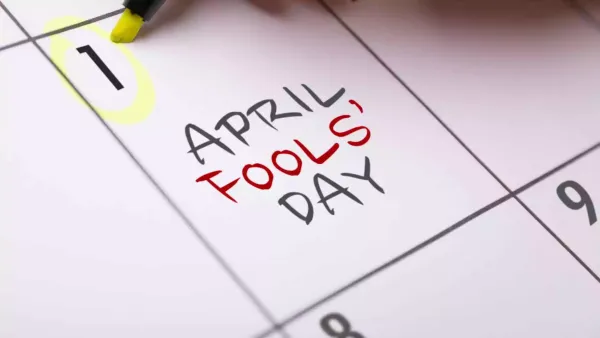
April 1 is finally here, and with it comes a day of laughter, tricks, and playful deception. Known as April Fools’ Day, or All Fools’ Day, this annual tradition is observed worldwide as pranksters take center stage, while those on the receiving end are often left bewildered. From lighthearted jokes between friends to elaborate media hoaxes, this day is all about humor and mischief. But where did this tradition originate? And how has it evolved over time? Let’s take a deep dive into the fascinating history of April Fools’ Day.
April Fools’ Day is an annual tradition on April 1st, marked by pranks, hoaxes, and practical jokes. The person playing the joke usually reveals their trick by shouting “April Fools!” at the unsuspecting victim. Over time, even mass media outlets have joined in on the fun, occasionally publishing fake news stories, only to reveal the prank the next day. But while it has become a beloved part of pop culture, its origins remain somewhat of a mystery.
Although the exact origin of April Fools’ Day remains uncertain, several theories attempt to explain how this tradition came to be.
One of the earliest potential references to April 1 as a day of foolishness comes from Geoffrey Chaucer’s The Canterbury Tales (1392). In the “Nun’s Priest’s Tale”, a vain rooster named Chauntecleer is tricked by a cunning fox. The text mentions “Since March began, full thirty days and two,” which some interpret as April 1. However, scholars argue that this may have been a misinterpretation or a copyist’s error.
Another theory traces April Fools’ Day back to 16th-century France, where New Year’s celebrations originally took place around March 25, ending on April 1. When France adopted the Gregorian calendar in 1582, shifting the start of the new year to January 1, some people either refused to accept the change or simply did not hear about it. These individuals continued celebrating New Year’s in late March and early April, making them the target of jokes and ridicule, including being sent on “fool’s errands” or having paper fish (known as “Poisson d’Avril”) taped to their backs.
One of the earliest clear literary references to April Fools’ Day appears in a 1561 poem by Flemish writer Eduard de Dene, which tells the story of a nobleman sending his servant on absurd errands—essentially an early version of playing pranks on April 1st.
By the late 17th century, April Fools’ Day had taken root in England. In 1698, Londoners were tricked into visiting the Tower of London to watch the “washing of the lions”, a non-existent event.
Some theories suggest that April Fools’ Day could be linked to the Genesis flood narrative, where Noah mistakenly sent out a dove before the floodwaters had receded. However, no historical or biblical scholar has confirmed this claim.
April Fools’ Day is celebrated in many different ways across the globe. While the spirit of the holiday remains the same—playing harmless pranks—each country has added its own unique twist.
April Fools’ Day has been the backdrop for some legendary hoaxes. Here are a few of the most famous:
Many historians believe that April Fools’ Day is tied to the changing of seasons. Similar spring festivals across cultures—such as the Roman festival Hilaria (March 25), India’s Holi, and the Jewish festival of Purim—all involve laughter, mischief, and playfulness.
Pranks on April 1st range from small jokes between friends to elaborate hoaxes by companies and media. Here are some of the most popular ways people celebrate:
Despite its mysterious origins, April Fools’ Day has become a universally beloved tradition. Whether it’s a simple joke among friends or an elaborate prank that captures worldwide attention, the holiday reminds us to embrace humor, creativity, and lightheartedness.